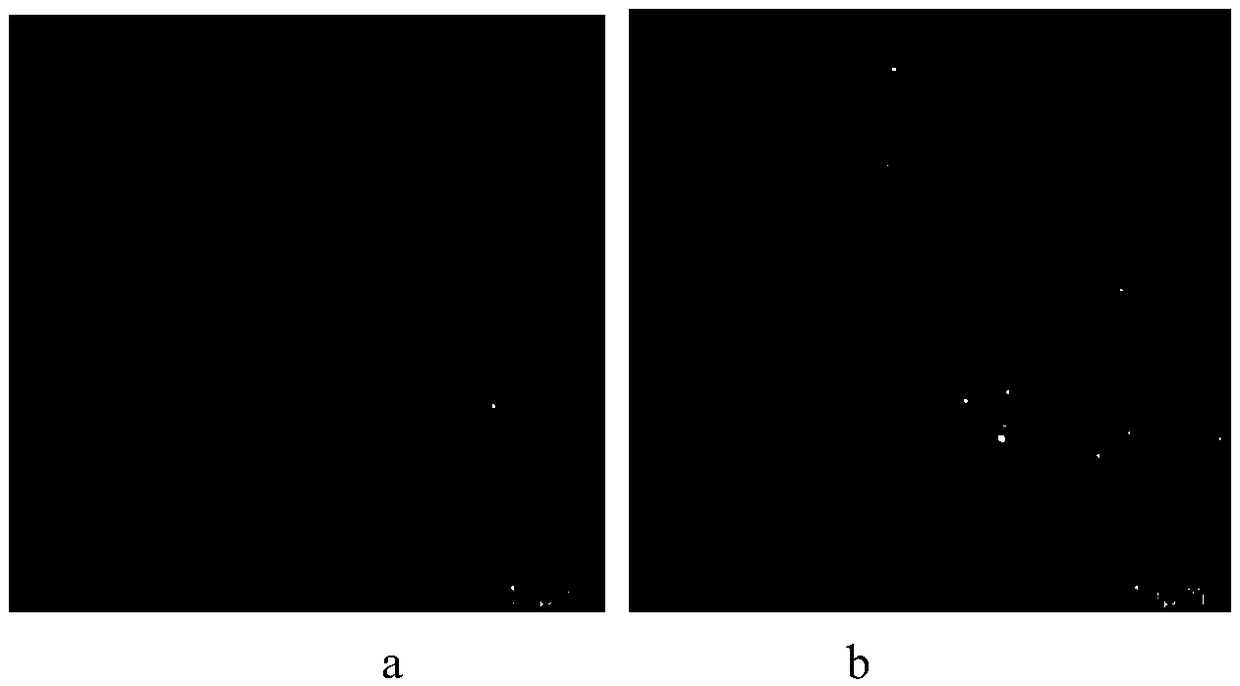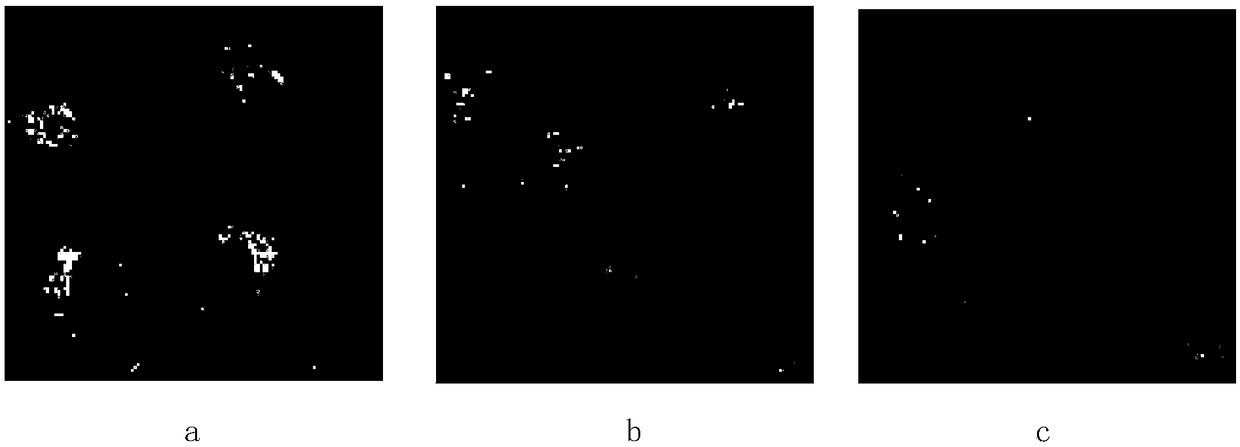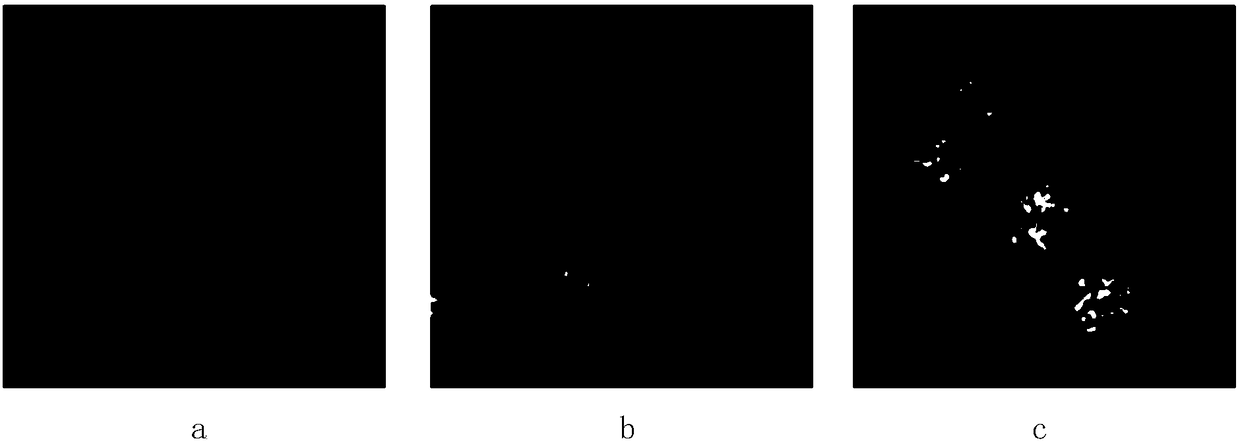Fluorescent probe and application thereof
A fluorescent probe, alkyl technology, applied in the field of analytical chemistry, can solve problems such as lack of biological samples, and achieve the effects of less damage to biological samples, good membrane permeability, and low cytotoxicity
- Summary
- Abstract
- Description
- Claims
- Application Information
AI Technical Summary
Problems solved by technology
Method used
Image
Examples
Embodiment 1
[0067] The fluorescent probe (1) and the LysoTracker Red probe of the embodiment of the present invention were used to perform fluorescence imaging on the cells, as follows:
[0068]
[0069] (1) Dissolve fluorescent probe (1) and LysoTracker Red probe with a small amount of DMSO;
[0070] (2) Add the two fluorescent probe solutions in step (1) to the culture medium respectively, and configure them as a culture solution containing a fluorescent dye 1 at a concentration of 10 μM and a culture solution of LysoTracker Red at a concentration of 1.0 μM;
[0071] (3) Use a pipette gun to pipette 1mL of the culture solution prepared in step (2), add it to the culture dish with HEK293 cells, and put it in 37°C, 5% CO 2 Cultivate in the incubator for 30min;
[0072] (4) The cultured cells were washed three times with PBS, and then 1 mL of blank mixed medium was added for fluorescent confocal imaging. The results were as follows: figure 1 As shown, wherein, a is a schematic diagram...
Embodiment 2
[0074] Fluorescence imaging of the process of cell starvation-induced lysosomal autophagy is monitored by using the fluorescent probe (2) of the embodiment of the present invention, specifically as follows:
[0075]
[0076] (1) Dissolve the fluorescent probe (2) with a small amount of ethanol;
[0077] (2) Add the fluorescent probe solution in step (1) to the culture medium containing 0, 5% and 10% embryonic bovine serum, and configure it as a culture solution containing fluorescent dye 2 at a concentration of 4 μM;
[0078] (3) Use a pipette gun to pipette 1 mL of the culture solution prepared in step (2) respectively, and add them to the culture dishes of human lung cancer cell A549 cultured with 0, 5% and 10% embryonic bovine serum medium, and place It is placed in 37 ℃, 5% CO 2 Cultivate in the incubator for 1h;
[0079] (4) The cultured cells were washed three times with PBS, and then 1 mL of blank mixed medium was added for fluorescent confocal imaging. The results...
Embodiment 3
[0081] The fluorescent probe (3) of the embodiment of the present invention is used to monitor the fluorescence imaging of the process of cell starvation-induced lysosomal autophagy, specifically as follows:
[0082]
[0083] (1) dissolve the fluorescent probe (3) with a small amount of methanol;
[0084] (2) adding the fluorescent probe solution in step (1) to a blank culture medium not containing embryonic bovine serum, and respectively configuring blank culture solutions containing fluorescent dye 3 at a concentration of 5 μM;
[0085] (3) Use a pipette gun to pipette 1 mL of the blank culture solution prepared in step (2) respectively, and add them to the culture dishes of cervical cancer HeLa cells that have been starved for 0, 0.5 and 1 hour respectively, and put them into At 37°C, 5% CO 2 Cultivate in the incubator for 20min;
[0086] (4) The cultured cells were washed three times with PBS, and then 1 mL of blank mixed medium was added for fluorescent confocal imag...
PUM
| Property | Measurement | Unit |
|---|---|---|
| diameter | aaaaa | aaaaa |
Abstract
Description
Claims
Application Information
 Login to View More
Login to View More - R&D
- Intellectual Property
- Life Sciences
- Materials
- Tech Scout
- Unparalleled Data Quality
- Higher Quality Content
- 60% Fewer Hallucinations
Browse by: Latest US Patents, China's latest patents, Technical Efficacy Thesaurus, Application Domain, Technology Topic, Popular Technical Reports.
© 2025 PatSnap. All rights reserved.Legal|Privacy policy|Modern Slavery Act Transparency Statement|Sitemap|About US| Contact US: help@patsnap.com



